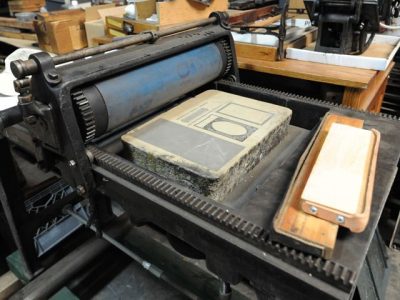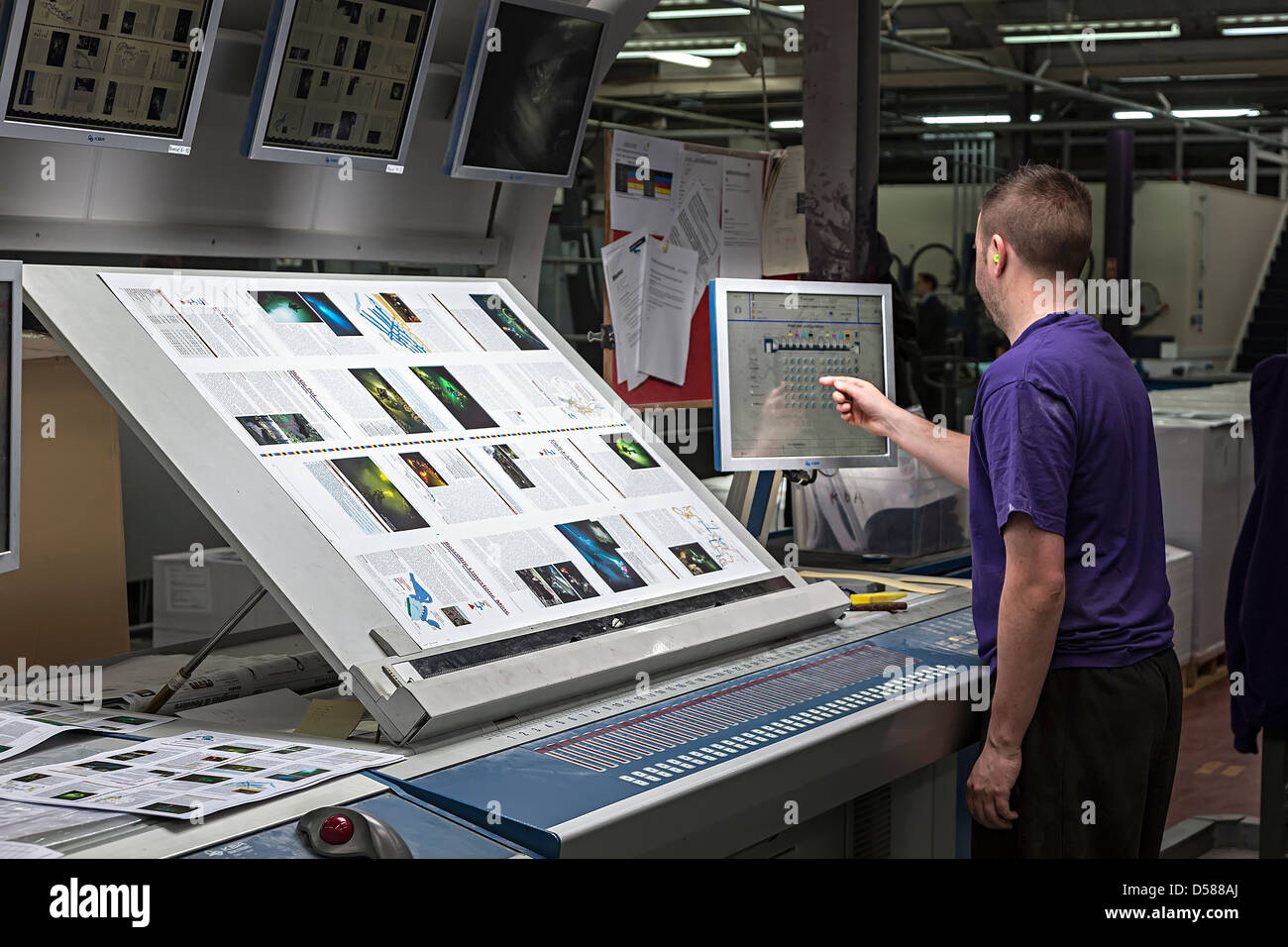Top Industries That Depend on litho printing Today
Top Industries That Depend on litho printing Today
Blog Article
A Comprehensive Overview to Comprehending Litho Printing Techniques
The globe of litho printing, a method stemming from the late 18th century, is a fascinating blend of history, scientific research, art and technology. Remain with us as we journey right into the exciting realm of litho printing.
The Historical Development of Litho Printing
The historic trajectory of litho printing, a crucial advancement in the realm of interaction, is an exciting tale of human ingenuity. Birthed in the late 18th century by Alois Senefelder, this method was at first an affordable method of releasing staged jobs. Lithography, originated from the Greek words for 'stone' and 'to compose', used a smooth stone surface area to move photos onto paper. The procedure developed with the introduction of the rotating press, which significantly enhanced efficiency (litho printing). In the 20th century, the advancement of countered lithography transformed the sector, enabling automation of premium prints. Each stage of litho printing's advancement showcases humanity's ruthless quest of effectiveness and high quality in visual communication.
Deciphering the Science Behind Litho Printing Inks
Relocating onward in the exploration of litho printing methods, the focus now changes to the scientific research behind litho printing inks. The structure of these inks, their drying out process, and color mixing strategies create the foundation of this intricate art type. Comprehending these elements is vital to mastering the craft and accomplishing the preferred print outcomes.
Make-up of Litho Inks
In lithographic printing, the basic function of litho inks can not be overemphasized. The structure of litho inks differs depending upon its function, but normally, they include 2 main components - pigments and lorries. Pigments, the color-providing aspects, are finely ground particles suspended in the lorry, a fluid that lugs the pigment onto the printing surface. The vehicle is a complicated combination of materials, oils, and solvents, which influence the ink's drying out time, bond, and gloss. In addition, different ingredients exist to boost specific homes like circulation, drying out, and resistance to environmental effects. Each part plays an important component in the final print's quality, making the accurate formula of litho inks an intricate science.
Ink Drying Refine
From the make-up of litho inks, focus transforms to the interesting process of ink drying. 2 key techniques are utilized in litho printing: oxidative drying out and absorption. Absorption, on the other hand, entails the ink seeping into the paper fibers, which is a faster process however can lead to less vibrant colors.
Color Mixing Techniques
While the drying process plays a key duty in litho printing, the scientific research of color blending methods holds equal relevance. This is a complex procedure that entails the cautious mixing of primary colors: cyan, magenta, and yellow, in varying percentages to accomplish a wide array of colors. The enhancement of black ink, referred to as 'crucial', assists in regulating the intensity and depth of the shades. The scientific research behind litho printing inks also takes into account the transparency of the ink, which influences just how colors overlay and mix. To accomplish a reliable shade mix, print specialists have to also comprehend the complexities of ink habits, color concept, and the physical residential or commercial properties of the substratum on which the ink is applied.
The Art and Style Components in Litho Printing
Litho printing takes a breath life right into art and layout through its distinct elements. The procedure involves creating an image on a lithographic limestone plate or steel plate with a smooth surface area. The picture is after that printed onto a tool, typically paper, by moving the ink from home plate. What sets litho printing apart is its capability to reproduce intricate designs with high fidelity, making the output practically similar to the original art work. This is achieved through making use of various line strategies such as hatching, cross-hatching, and stippling, which enable a variety of tonal impacts. Litho printing fits a range of shades, making it possible for musicians to develop dynamic and vibrant prints. This combination of precision and convenience makes litho printing a recommended option for several artists and developers.
Modern Applications of Litho Printing Techniques
Litho printing strategies have discovered considerable use in the modern-day commercial field. Its influence and value remain to expand with the introduction of my blog new advancements and technologies in the field. This section will discover these contemporary applications and the transformative function they play in the printing market.
Commercial Litho Printing Uses
Litho printing remains a critical component of the business industry. High-volume printing jobs, such as the manufacturing of publications, newspapers, and product packaging, rely on litho printing for its capability to supply premium picture high quality and price performance. Litho printing additionally provides a broad shade range, remarkable to that of electronic printing.
Innovations in Litho Printing
Pressing the limits of standard methods, contemporary advancements have actually sustained a host of innovations in litho printing. These breakthroughs have not just enhanced the quality and efficiency of litho prints but additionally increased its application range. One popular advancement is digital litho printing, which incorporates the virtues of digital modern technology with litho's high-quality result. This crossbreed design offers faster setup times, lowered waste, and allows on-demand printing. Another notable improvement is the introduction of environmentally pleasant inks. These inks, made from veggie or soy-based solutions, have actually significantly minimized the market's ecological effect. litho printing. In addition, the development of innovative plate innovation has structured the printing procedure, causing sharper pictures and improved color integrity. These developments emphasize the enduring importance of litho printing in the modern world.
Exploring the Refine of Litho Printing: Detailed

Difficulties and Solutions in Contemporary Litho Printing

Regardless of the precision and practice that litho printing happily promotes, it is not without its set of modern challenges. One of the most prevalent problems consist of the high preliminary arrangement expense, problem in printing variable information, and environmental issues as a result of chemical usage. Nonetheless, options are becoming modern technology develops. Digital litho printing permits economical short runs and very easy customization, dealing with the issue of variable data. Environmentally-friendly inks and safer plate-making procedures reduce environmental problems. In addition, advancements in automation have actually minimized labor prices, even more democratizing the lithography process. Thus, while there are obstacles, the litho printing industry is proactively adapting to meet them head-on, ensuring its relevance in the future.
Verdict
In conclusion, litho printing, with its abundant background and clinical ins and outs, holds a considerable location in i thought about this the print industry. As the overview discloses, it's a synthesis of art and technology, with modern innovations guaranteeing its significance. Nevertheless, the market faces obstacles that call for innovative solutions, with an emphasis on automation and sustainability. The future reference of litho printing depends upon its capacity to adjust to these transforming demands, verifying its enduring value in an evolving market.

Report this page